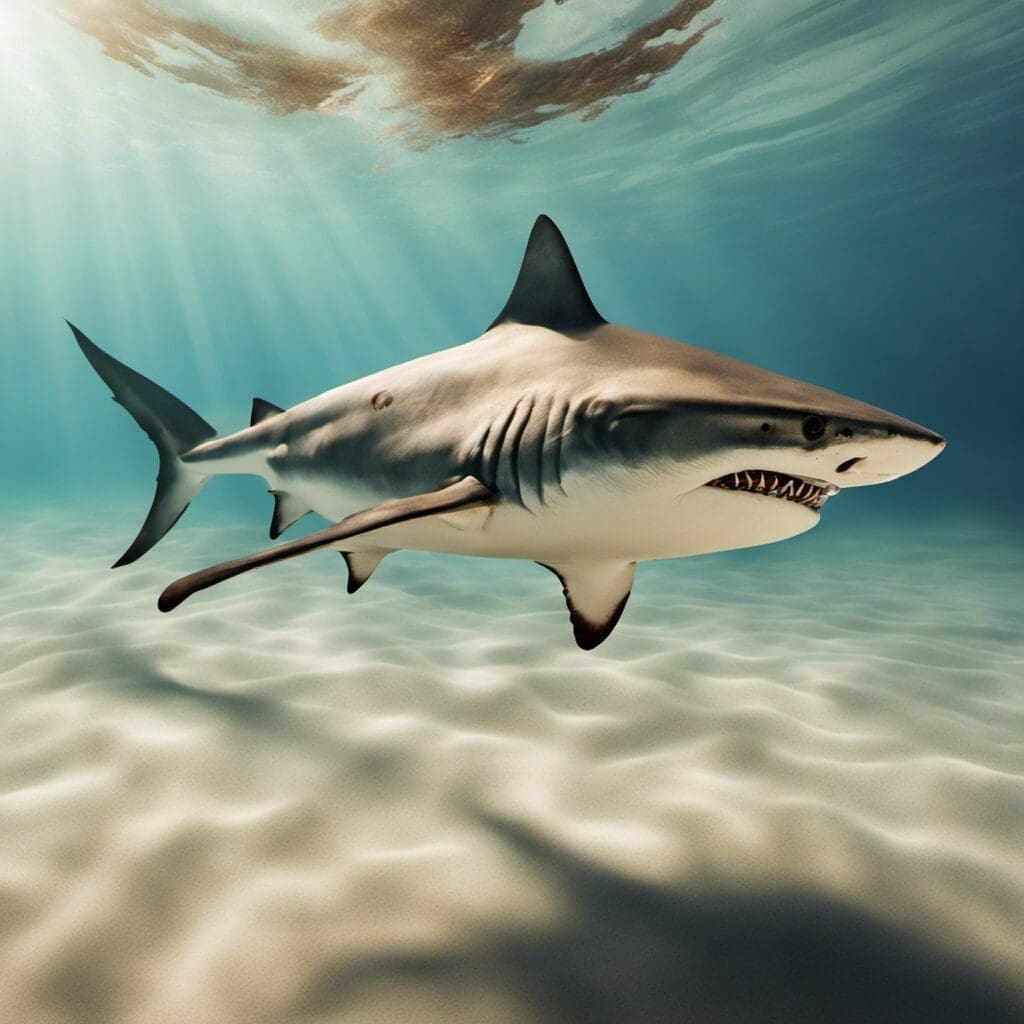Introduction
The Blacktip Shark, scientifically known as Carcharhinus limbatus, belongs to the family of Carcharhinidae, colloquially known as ‘requiem sharks’. These are types of Sharks known for their aggressive and gregarious (group) behavior.
Conservation Status
The International Union for Conservation of Nature (IUCN) lists Blacktip Sharks as “Near Threatened.” This classification is due to their vulnerability to overfishing, both as target and bycatch.
Conservation efforts include restrictions on the use of longlines and certain types of nets in some areas to reduce bycatch. Some countries have also established size and bag limits on recreational catches to help protect the population.
Statistics
| Length (Average) | 1.5m |
| Length (Range) | 1.2 - 2m |
| Weight (Average) | 18kg |
| Weight (Range) | 10 – 30kg |
| Average Lifespan | 10-12 years |
Distribution
Blacktip Sharks can be found globally in warm coastal waters. They’re particularly common around Florida and Bahamas, the Mediterranean, off the east coast of Africa, and northern Australia.
While not migratory, Blacktip Sharks are known to move towards warmer, inshore waters during colder months.
Habitats
Blacktip Sharks inhabit warm, shallow water bodies. They are typically found in depths less than 30m.
They do well in water temperatures above 20ºC and generally thrive in both brackish and marine environments.
When and Where to See
Blacktip Sharks are most commonly spotted during the warmer months. Dusk and dawn are the peak activity times for these creatures.
Best Fishing Locations
While they can be found globally, the most common fishing spots include the United States East Coast, particularly Florida, and areas around the Bahamas.
Top tips for locating Blacktip Sharks:
- Focus on warm coastal waters less than 9m in depth.
– They like to swim in the surf zone, so keep an eye on the waves.
– They are often spotted near river mouths and vegetated areas.
How to Catch
Blacktip Sharks respond well to live or dead bait such as squids, mullets or mackerel. Anglers can use various fishing techniques including trolling and bottom fishing, though cutting and drifting bait are most effective.
Fishing is often the most successful in the early morning or late evening, when the sharks are most active.
Identification Guide
Blacktip Sharks have a distinctive black marking on their dorsal and pectoral fins and generally elongated bodies which are grey-brown in color. They are slim and streamlined, designed for quick bursts of speed.
Culinary
Blacktip Shark meat is lean and mild tasting and can be grilled, poached or used in soups. Good source of Omega 3 fatty acids and high-quality proteins. Care should be taken to cook it thoroughly due to a small risk of parasites.
Additional Information
The Blacktip Shark is a viviparous species with females giving birth to live young after a 10-12 month gestation period. Blacktips are social creatures and quite often found in groups.
Main predators are larger shark species including the Bull Shark and Tiger Shark. Human activities like overfishing and habitat destruction are major threats.
References and Further Reading
For more information about Blacktip Sharks, visit the Australian Museum’s page on Blacktip Reef Sharks. Examples of further reading include “Florida Museum – Blacktip Sharks“, and “Sharks Information – Blacktip Sharks

